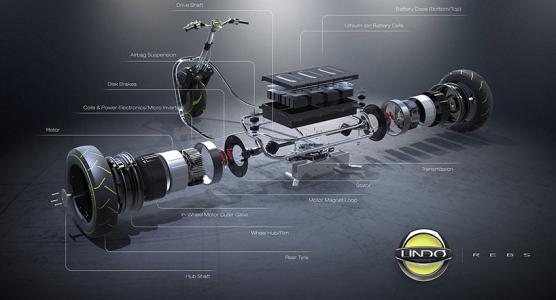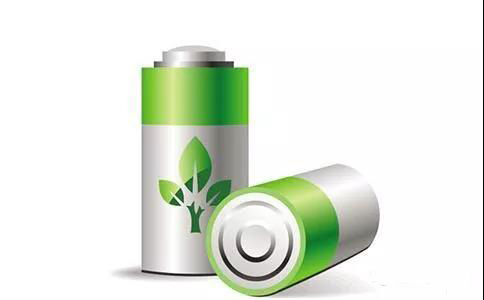Lithium-Ion Battery Life Cycle Analysis
Dec 13, 2019 Pageview:2100
Currently, Lithium-ion batteries are very popular. They are used in every major field of energy. Whether it is your smartphone or electric hybrid vehicles, Lithium-ion batteries have various advantages over other types. Hence, they are widely used on a global scale.
As the source for Lithium is getting scarce with time, it is our responsibility to assess the life cycle of these batteries and make an attempt to optimize them. There are various studies and analysis done for Lithium-ion batteries which assess the life cycle. So, in this article, we will go through the main highlights of such life cycle assessments and figure out the ways to improve the Lithium-ion battery life.
Comparative Life Cycle Assessment of Lithium-Ion Battery:
The most common types of Lithium-ion battery is Lithium Manganese Oxide and Lithium Ion Phosphate. These types are frequently used in EVs, which are analyzed carefully to draw the assessment in real-life operational conditions. We all know that over time, the battery capacity fades away due to self-discharge. However, we also need to determine the influence of environmental factors on the battery chemistry of Lithium-ion batteries.
The Life Cycle Assessment is done to analyze several aspects, such as:
Cradle-to-gate total energy usage
Greenhouse gas emissions
SOx, NOx, and PM10 emissions
Water Consumption
To understand the complete assessment, you will need a more profound knowledge of the battery chemistry. Still, we can provide you a brief of the key factors that affect the Life Cycle Assessment Results.
1: NMC111 Powder Production:
The primary data obtained from the analysis is that NMC111 Powder production is a very energy sensitive process. And the main focus of the producer is to maximize the material yield and ensure product quality instead of improving energy efficiency. Along with this, the NMC111 powder production process is also mainly responsible for Greenhouse gas emissions and total energy use.
2: Cell Production:
This process consists of several phases, including slurry preparation, cell assembly, electrode production, and cell conditioning. To fully charge the battery, an estimated amount of 4 MJ/kWh is used. So, the cell production rate is 170MJ/kWh, where 30 MJ is electricity only, and the rest of 140 MJ is steam. Overall, the underutilization of the resources is leading to the overestimation of energy intensity for cell production.
3: Lithium-ion Battery Supply Chain:
The locations of the facilities where Lithium-ion batteries are produced along with the origin of the battery materials also have a significant impact on the LCA. Fuel like natural gas, coal, residual oil, diesel, and gasoline are used, which sums up the energy consumed by the production cycle. So, all the resources needed for the production of Lithium-ion batteries are running out gradually. Hence, there is a bigger challenge for all the manufacturing companies to fulfill the Supply and Demand chain.
The Life Cycle Assessment for Lithium-ion batteries is done to ensure that the resources will last for the next generation.
How Long Does A Lithium-Ion Battery Usually Last?
There are many aspects that make the Lithium-ion batteries longer lasting. It includes high-energy-density, low-discharge rate, and has better charging efficiency than any other type of battery. Hence, they recharge faster than others and last longer than others.
When someone asks you how long a lithium-ion battery will last, you can give a straight answer without asking about the type of battery. For every Lithium-ion battery that is designed, the power is calculated in terms of Kilowatt-hours. And to determine the lifespan of the battery, we have to calculate the charging and recharging cycles before the battery starts degrading. At present, most of the manufacturers are designing batteries that work ideally for over 1000 charge cycles.
Along with this, you must also account for the environmental factors that might affect the battery chemistry such as extreme hot or extreme cold temperature zones. So, if you store a Lithium-ion battery, its shelf-life can be extended to 3 to 6 years with proper care.
How Do You Prolong A Lithium-Ion Battery Life?
We all want to know how it is possible to prolong the Lithium-ion battery life. Well, the answer isn’t as complicated as you might think. Every battery comes with a maintenance guide that suggests every step that you can take to increase the life of the batteries. Some factors, like internal resistance and self-discharge, plays a dormant role in determining the exact life cycle of the batteries.
If you don’t want your battery to run out of juice faster than expected, then take a look at the tips given below to prolog the battery life:
Always keep the batteries at room temperature and don’t leave them in a location where they can get exposed to extreme heat or cold.
Prefer charging the battery partially instead of complete charge. As Lithium-ion batteries don’t have charge memory, you don’t need to wait to recharge them. In opposition, if you let the battery discharge completely, you are risking the charging abilities, and you might have to revive or recondition the battery.
For storage purposes, charge the batteries halfway and keep a record of the percentage. If the percentage flickers over time, then again charge the battery up to 50% and store it.
Make sure that you use the right charger for the battery. Only because the charger fits in the socket doesn’t signify that it is the right one. The wrong voltage might affect the battery capacity without any sign.
Learning a thing or two about the Lithium-ion batteries is the ideal way to keep them in optimal condition. The chemistry of these batteries is not that complicated. So, as long as you are careful, LIB will run longer than expected. Whether it is the shelf life or the run time, the battery life can be increased by following the guidelines given by the manufacturer. But don’t mistake to think that the batteries will last forever. Until this day, there is no battery designed that might lasts for eternity.
Leave Message
Hottest Categories
-
Hottest Industry News
-
Latest Industry News












